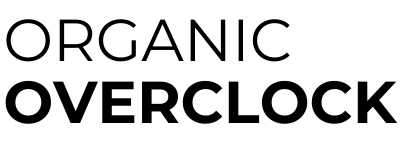Most people get ice baths wrong. Not the temperature part — that’s straightforward. It’s the timing.
Too short? You miss the benefits. Too long? You risk injury and waste time. The sweet spot? It depends entirely on what you’re trying to accomplish.
Here’s what actually works — and why most people either bail too early or stay way too long.
What Happens to Your Body During an Ice Bath?
Your body doesn’t just react to cold — it adapts in phases. Understanding these phases is the key to nailing your duration.
- Phase 1: Initial Shock (0–1 minute): Your nervous system freaks out. Heart rate spikes, breathing gets choppy, and your brain screams “GET OUT.” This is normal. Push through it.
- Phase 2: Stress Adaptation (1–5 minutes): Here’s where the magic happens. Norepinephrine floods your system, cortisol starts doing its job, and your body begins the actual adaptation process. Most benefits kick in during this window.
- Phase 3: Extended Exposure (5+ minutes): For specific goals like muscle recovery or inflammation reduction, longer exposure amplifies the hormonal response. But there’s a point of diminishing returns.
The duration you choose determines which phase you’re targeting — and what benefits you actually get.
If you’re not sure how cold to go, our guide on how cold should an ice bath be breaks it down by experience level and goal.
Optimal Ice Bath Duration by Goal
Let’s cut through the guesswork. Here’s what the research shows for specific outcomes:
Muscle Recovery
- Duration: 11–15 minutes
- Temperature: 51.8–59°F (11–15°C)
This is the sweet spot for post-workout soreness and inflammation. One study found that 11–15 minutes in this range significantly reduced delayed onset muscle soreness (DOMS) compared to passive rest (Machado et al., 2016).
The key? Pair it with your hardest training sessions. Skip it on easy days — you don’t need the recovery boost.
Learn more in our full breakdown on how ice baths help muscle recovery.
Metabolism & Fat Loss
- Duration: 5–10 minutes (longer for advanced users)
- Temperature: 57–68°F
Short, colder exposures can spike your metabolic rate for hours. Even a single session at 57°F increased metabolism by over 350% in one study (Šrámek et al., 2000).
The bonus? Repeated exposure improves insulin sensitivity — shown to improve by 43% in people with type 2 diabetes (Hanssen et al., 2015).
Stress & Anxiety Relief
- Duration: 2–5 minutes
- Temperature: 53–57°F
You don’t need to suffer for stress relief. Parasympathetic activation — your “rest and digest” response — kicks in quickly at these temperatures. Five-minute immersions reduced sympathetic dominance and improved stress resilience in multiple studies.
The dopamine hit is real too. I notice a mood lift that lasts for hours after even a short plunge.
See how cold plunging supports mental health in our full article on anxiety and cold therapy.
Better Sleep
- Duration: 3–5 minutes (1–2 hours before bed)
- Temperature: ~55°F
Here’s the counterintuitive part: cold exposure before bed can actually improve sleep quality. The key is timing and duration.
A 10-minute plunge at 55°F enhanced slow-wave sleep and reduced nighttime awakenings in one study (Chauvineau et al., 2021). But keep it short at night — longer sessions can be too stimulating.
Inflammation & Immune Function
- Duration: 10–15 minutes
- Temperature: ~57°F
For systemic inflammation or immune system support, longer exposure works better. Whole-body immersion at 57°F releases hormones that regulate immune responses and reduce inflammatory cytokines (Eimonte et al., 2021).
This duration is particularly useful if you’re dealing with autoimmune issues or overtraining syndrome.
Full list of researched benefits is in our article on science-backed ice bath benefits.
When Is the Best Time of Day for Ice Baths?
That covers what cold can do — but when you plunge matters too.
Morning sessions boost alertness and metabolism. You’ll naturally tolerate longer durations because your cortisol is already elevated. Perfect for 10–15 minute recovery or fat-burning sessions.
Evening sessions should be shorter (3–5 minutes max). Your nervous system is winding down, so extended cold exposure can interfere with sleep quality.
Read more in our deep dive on when to take an ice bath.
How Long Is Too Long?
Most benefits peak around 15 minutes. Beyond that, you’re risking nerve damage, muscle injury, and hypothermia for minimal additional benefit.
Warning signs to watch for:
- Uncontrollable shivering
- Numbness in extremities
- Dizziness or mental fog
- Loss of coordination
If you’re unsure what to expect afterward, we cover it in what happens after an ice bath.
Beginner vs Advanced Duration Guidelines
If you’re new to cold plunging:
- Start with 1–3 minutes
- 2–3 sessions per week
- Focus on consistency over duration
If you’re experienced:
- Work up to 10–15 minutes depending on your goal
- 4–6 sessions per week max
- Follow Dr. Andrew Huberman’s recommendation: aim for 11 minutes total per week, spread across multiple sessions
Not sure how often to plunge? Read our full guide on how often to ice bath.
Quick Reference Chart
| Goal | Temperature | Duration |
|---|---|---|
| Muscle Recovery | 51.8–59°F | 11–15 min |
| Fat Burning | 57–68°F | 5–10 min |
| Stress/Anxiety | 53–57°F | 2–5 min |
| Sleep | ~55°F | 3–5 min |
| Inflammation | ~57°F | 10–15 min |
| Immune Resilience | Varies | 30 sec–2 min |
| Foot Pain/Gout | ~68°F | 20 min |
Duration Is a Tool, Not a Challenge
Here’s what I’ve learned after years of cold plunging: duration isn’t about toughness. It’s about precision.
Start small, stay consistent, and match your time to your goal. A 3-minute stress-relief session is more valuable than a 20-minute ego trip that leaves you dreading your next plunge.
Duration matters — but so do timing, temperature, and frequency. Get all four right, and cold therapy becomes a reliable tool instead of a daily battle.

